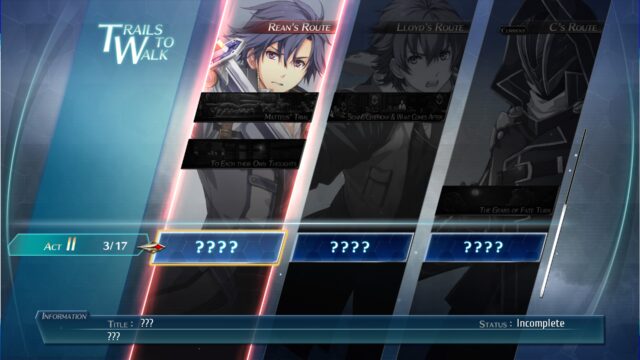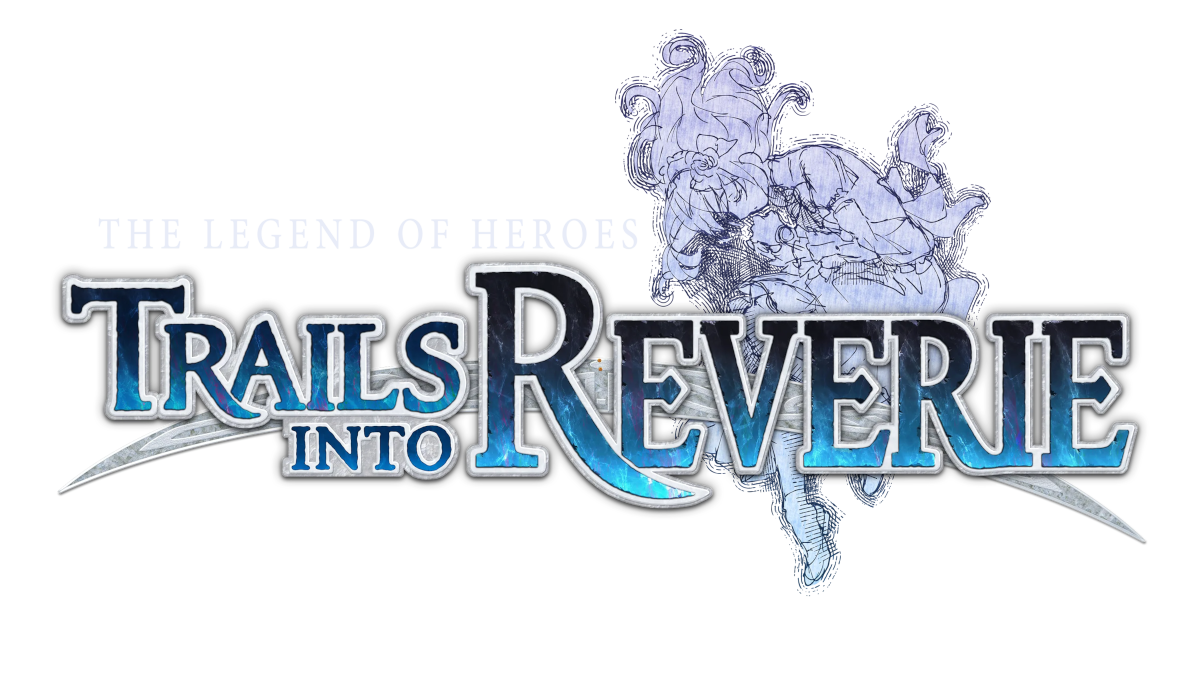The Legend of Heroes: Trails into Reverie Review
One More Wishy with Mishy
It’s been a busy period for The Legend of Heroes fans in the west as NIS America works hard to catch up on Nihon Falcom’s series. After finally getting the two games in the series’s Crossbell saga, western RPGamers are now able to move onto the capstone that is The Legend of Heroes: Trails into Reverie. The game acts as a highly satisfying, somewhat fanservicey, epilogue to both the Trails of Cold Steel saga and the Crossbell duology. While some of the deeper world-building feels increasingly convoluted, and it’s time for the series to move on to new pastures, it is great to have one final episode of glory with most of the cast as the game celebrates the series’s combat evolution and at least partially ties up some of its numerous unresolved plot points.
It’s important to get this point out of the way as it informs much of this review, but The Legend of Heroes: Trails into Reverie is certainly not a recommended entry point for newcomers. It is very much a final hurrah for the events surrounding western Zemuria and simply trying to talk about its premise is impossible without giving some spoilers for previous titles. Trails into Reverie takes place as Crossbell looks to finally be able to attain its independence after fighting off one final occupation by the remnants of those unhappy Trails of Cold Steel IV’s war ended as it did. Players are given an early chance to wander around the city as the citizens get excited for the official ceremony officially signing its independence. However, the signing ceremony is interrupted by one Rufus Alberea, who suddenly returns with an armed force and overwhelming powers to take control over Crossbell as its Supreme Leader.
Following this turn of events, players are given three different but interconnected story threads in what soon becomes a race against time, each following its own protagonist, in what it dubs the Trails to Walk system. First of these is the Crossbell duology protagonist Lloyd Banning. The second is the Erebonian Empire’s great hero and Trails of Cold Steel protagonist Rean Schwarzer with his allies in both Class VIIs. The final, and most interesting in how they impact the plot, is the initially-enigmatic C, who is joined by three new characters: former assassins Swim and Nadia, plus the very human-like doll Lapis. Each of the individual protagonist’s routes is linear and generally sees them visiting and advancing through areas from the previous games: mostly around Crossbell but with a few excursions into Erebonia as well. Players can frequently choose which order to tackle these chapters, and switch partway through if desired, though this order doesn’t have any impact on proceedings, nor can players get too far ahead on any one route.
Given the vast majority of characters have already undergone extensive development in previous games, there’s not much further development to be had for them here; it’s all largely reiterative of what’s come before. However, C’s team gets its fair share of development through the game, while bringing some levity to everything with their outside perspective. Nonetheless, it’s still a pleasure to see all of the major characters across the series interacting with each other and how their bonds have permitted them to grow toward their current positions and goals. The Trails to Walk system is largely effective at keeping the story moving along, keeping players abreast of the multiple threads running through the game, and highlighting where things link together. While some of the higher-minded parts of the story, and the foundational problems facing Zemuria overall, are certainly becoming a bit convoluted, Trails into Reverie still manages to bring it all together into another incredibly emotional and satisfying finale.

Although the actual routes and overall story are linear, players can choose the order they tackle certain chapters.
The presentation elements of Trails into Reverie are as strong as fans have come to expect. Though already shown in the later Trails of Cold Steel games, the sight of the city-state Crossbell rendered in full detail so soon after the duology’s release in the west remains a pleasurable experience. The character models and environments all look great with excellent attention to the detail. However, although the writing around them is great, the game isn’t great at imparting the action in its more dynamic cutscenes, and players will need to fill in many of the blanks it uses camera tricks to work around. There also aren’t many new sights to see as players retread familiar territory.
Trails into Reverie’s music is another top-drawer listen from the Falcom Sound Team. “The Destination of Fate” is a sweeping standout track evoking all of the emotional journeys that the cast has been through, and the game makes fantastic use of returning themes and motifs throughout. The soundtrack runs through the gamut of upbeat dungeon exploration and exciting combat tracks like “Wind-up Yesterday” to jazzy interludes and understated relaxation like “The Sunset We Always Look”, and it’s incredibly easy just to put the controller down for a few minutes and get swept up in the music. The voice acting retains the high quality of the series, and the massive cast present in Reverie — new and returning — all perform their roles more than ably. It’s still not 100% voiced, but that’s easy to look past with all of the major events getting the treatment, while various combat cries and comments keep the characters and their natures in the player’s mind.
The focused, time-sensitive nature of the main story means that much of the exploration of regular life and investigative quests from other titles are not present. The game instead places its additional content into the Reverie Corridor, including significant post-game content. The Reverie Corridor is a mysterious realm-slash-dungeon that all three parties end up being transported to, and which conveniently temporarily alters their memories to avoid any repercussions from them meeting before the plot permits it. Its full relationship to the main plot is revealed down the line, but for the bulk of the game it acts primarily as a repeatable optional side dungeon where players can experiment with parties built up of their favourite characters and enjoy mini-games, such as the returning Vantage Masters and Pom-Pom Party. Most of its content is unlocked by opening special rewards found by defeating enemies in the Reverie Corridor. The Reverie Corridor is also where the only real quest system in the game exists, and it gives players a wide variety of tasks to complete, such as defeating a number of enemies, completing certain mini-games, and so on.
The Reverie Corridor offers plenty of rewards in the form of combat and system upgrades as well as new Quartz, gear, and costumes, as well as side story episodes that focus on particular cast members and show a wide variety of flavourful events taking place prior to or alongside the game that sometimes involve a bit of exploration and combat. The Reverie Corridor certainly serves its purpose and has plenty of enjoyable elements to it, but placing all of the side content in here leaves it feeling somewhat disconnected from the rest of the game.
Returning players will get no surprises from The Legend of Heroes: Trails into Reverie’s turn-based combat, which further refines the systems that have been superbly polished, beginning back in Trails in the Sky. It is effectively a carbon copy of the system built up over time and used to fantastic effect in Trails in Cold Steel IV, with the addition of new United Fronts. A further extension of combat links, United Fronts let players use the Assault Gauge they build up over time or by hitting breakable objects in the field to unleash a United Attack, United Art, or United Heal. It’s one of the many options players have at their disposal, and works nicely within the Brave Point system as any use of a United Front restores Brave Points as well. The cross UI system introduced in Trails of Cold Steel III still works wonders for giving players easy and quick access to all of the combat options available and it’s very pleasing to be able to swiftly blast through a set of turns when a plan is formed while also being able to take the time to fully consider all of the tactical possibilities when needed.
While combat is as strong as it’s ever been, with a huge selection of characters to enjoy using, there remain occasional annoying bosses whose health and speed make them a frustrating slog compared to other foes on the standard difficulty. However, the game at least keeps up the series’ mitigating options of a freely adjustable difficulty and the option to retry a fight with the enemies weakening immediately after a loss. Meanwhile, those with small screens or sitting far away may struggle to clearly read the health, EP, and CP numbers in the bottom-right of the screen due to the text’s small size. Nonetheless, being able to pull off powerful joint attacks and combos, or escape from a tough spot, remains immensely satisfying. As turn-based combat systems go, the series has always been right up there at the top, and Trails into Reverie utilises it excellently.
Trails into Reverie runs into some challenges of having so many playable characters. A few of the characters are simply pushed to sidelines in the story, while trying to quickly equip them all becomes a chore. Those not actively seeking out tougher challenges and the enjoyment of meticulously building out loadouts will find it much easier to just let the game automatically equip the party every now and then rather than try to keep on top of it. The game simplifies the equipment aspect by restricting it largely to upgradable items unique to each character, but their Orbments — effectively magic — are another matter. It ultimately manages to satisfy both worlds: it’s easy enough to quickly set up a team capable of advancing through the standard difficulty, but there are many ways those seeking the challenge can setup some intricately planning synergy for their preferred party members.
With its placement as a capstone on the titles that have come before, The Legend of Heroes: Trails into Reverie is very much one for the fans. It’s largely a celebration of all that’s come before it, both narratively and in its combat, and ultimately successful for doing so. It’s nature means Trails into Reverie is lacking some of the fun investigative parts that have helped players inhabit the world, but being able to see all of the main characters interact again is a pleasure, and it once again pulls off an impressive emotional finale. With all that said and done, it’s definitely time the series headed for new pastures and hopefully western fans won’t have too long to wait before finding out where it goes in Kuro no Kiseki.
Disclosure: This review is based on a free copy of the game provided by the publisher.


Great seeing so many past characters team up
Trademark Trails emotional finale
Combat is more polished than ever
Superb soundtrack
Some bosses are a slog
Lacking the enjoyable investigative parts









Recent Comments